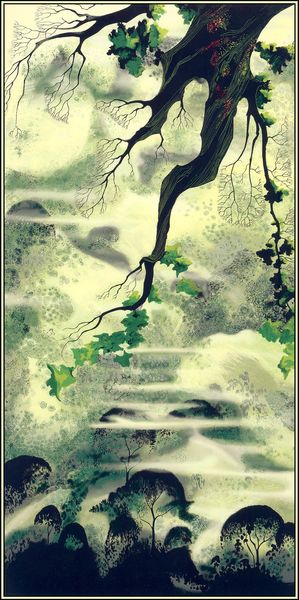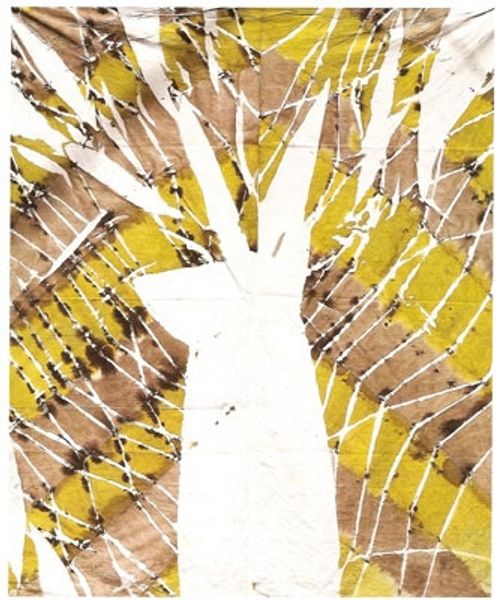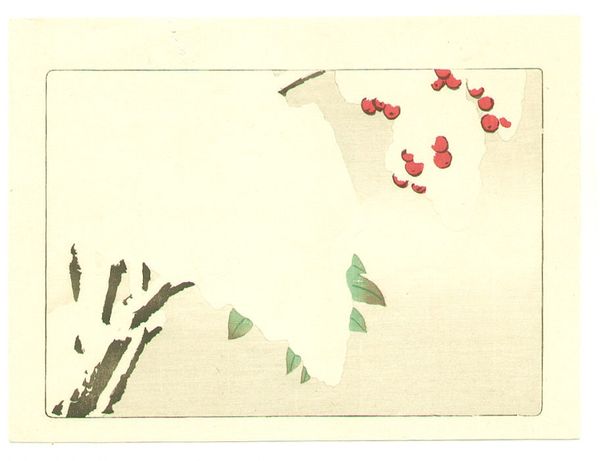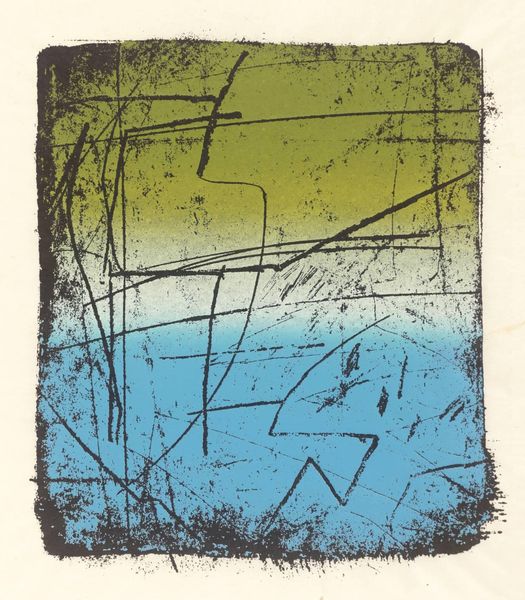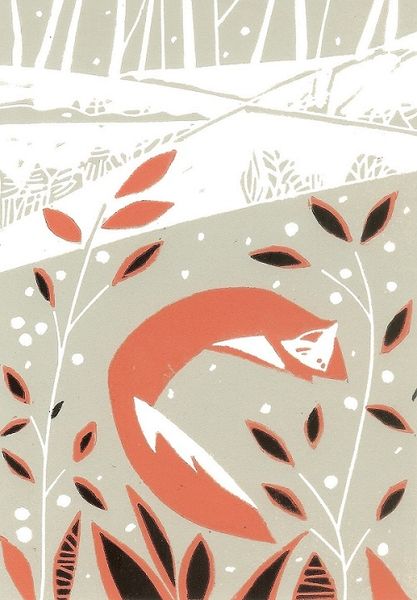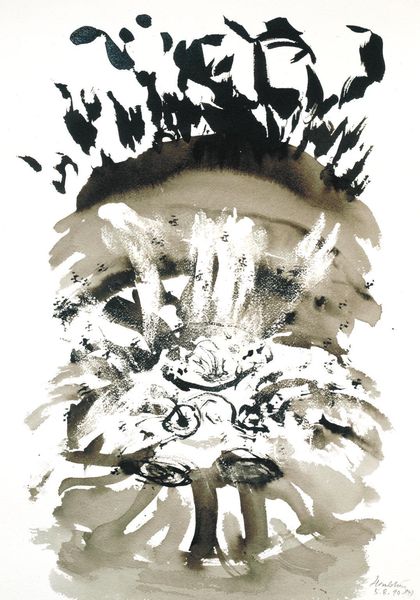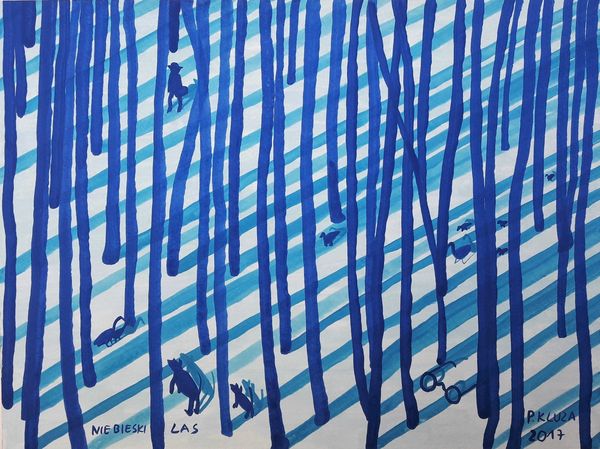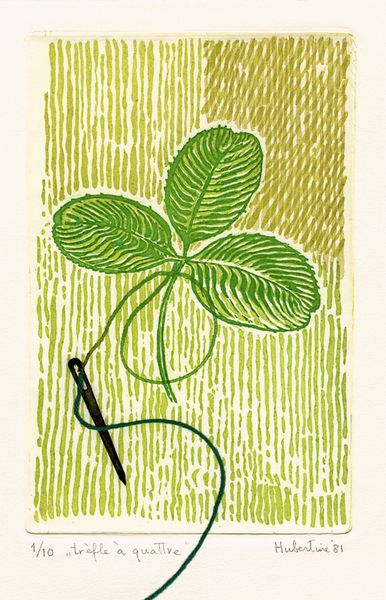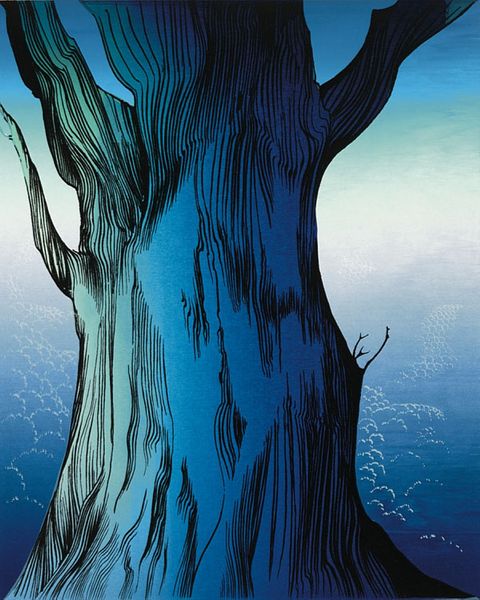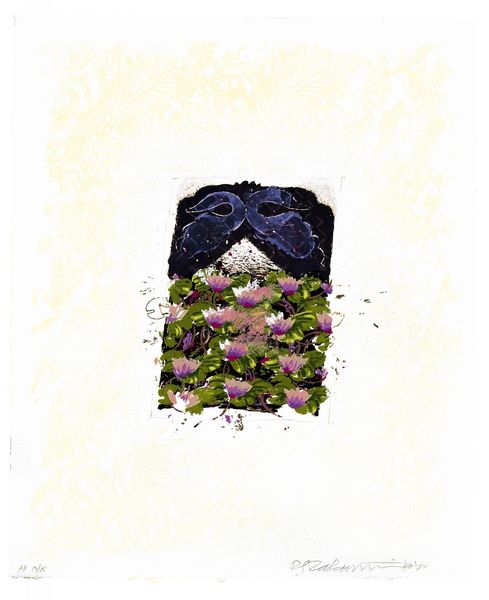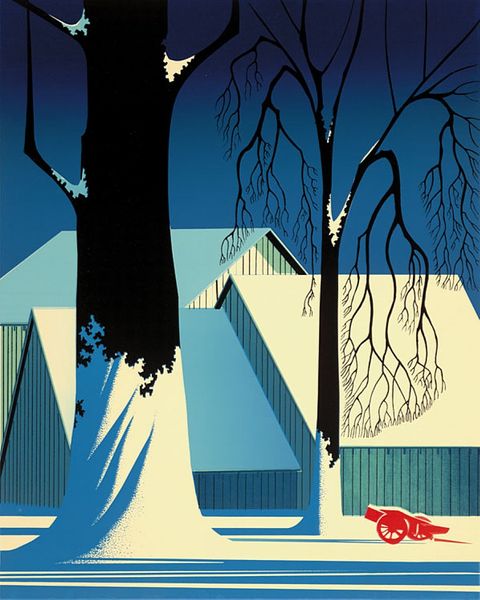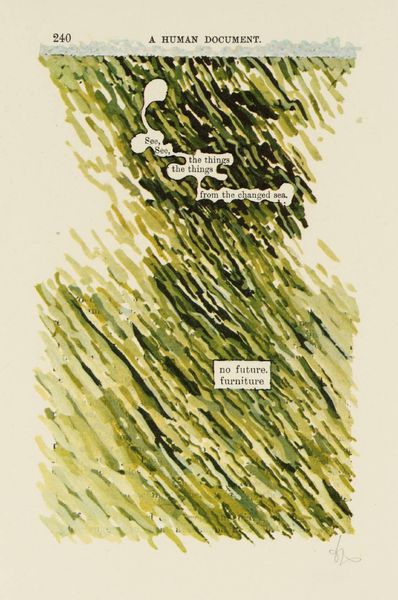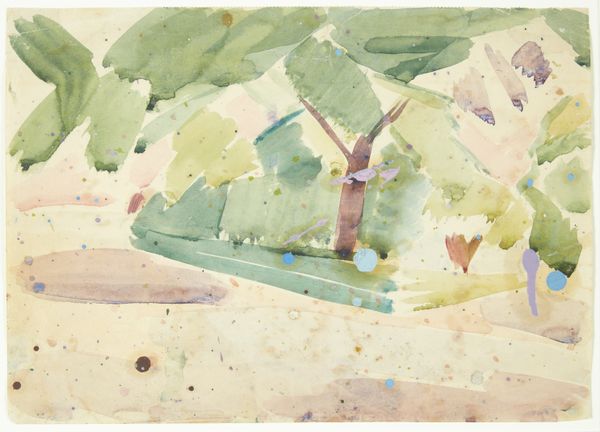
painting, watercolor
#
portrait
#
water colours
#
painting
#
landscape
#
watercolor
#
symbolism
Copyright: Public domain
Curator: Here, we have "April," a watercolor by Theodor Severin Kittelsen from 1890. What's your initial read? Editor: It feels wistful. That sleeping child, framed by what looks like autumn leaves and a sprinkle of rain – it's a bit of a melancholy springtime. Curator: Kittelsen, you see, often blended nature and folklore in his works, and it seems the image might be representing dreams, using nature as an intimate protective realm, that contrast so sharply against the cold that is implied by the rain above. The symbolism he engages here runs deep. Editor: And it’s fascinating how he used watercolors to create such layered textures, I mean look at the rendering of those leaves. Did Kittelsen see them merely as aesthetic? I wonder if he ever grew these himself? Or considered what kind of labor might be tied to their acquisition? The level of attention he paid implies that these materials must have had personal or intrinsic value. Curator: Perhaps a personal one indeed! Although celebrated for his dark, troll-filled landscapes, pieces like "April" reveal a tenderness. There's a cyclical notion – sleep within decay leading to springtime, renewal, a lullaby that murmurs of the ephemeral. Editor: That "ephemeral" nature, it strikes me that while art historical discourse positions "high art" in opposition to mere craftwork, watercolors such as these are tied directly to materials which inevitably degrade quickly. Was this intentional commentary on impermanence by Kittelsen? I think not, yet that knowledge inescapably colors how *we* must approach this piece. Curator: It could be said the method aligns with its subject matter— a reminder, that just like spring showers, artistic vision blossoms, flourishes, and fades. Editor: Right, exactly—we, too, return, transformed, to whatever constitutes our Earthly beds. On that somewhat lugubrious note... thanks for lending an eye, that was wonderful! Curator: Thank you.
Comments
No comments
Be the first to comment and join the conversation on the ultimate creative platform.
